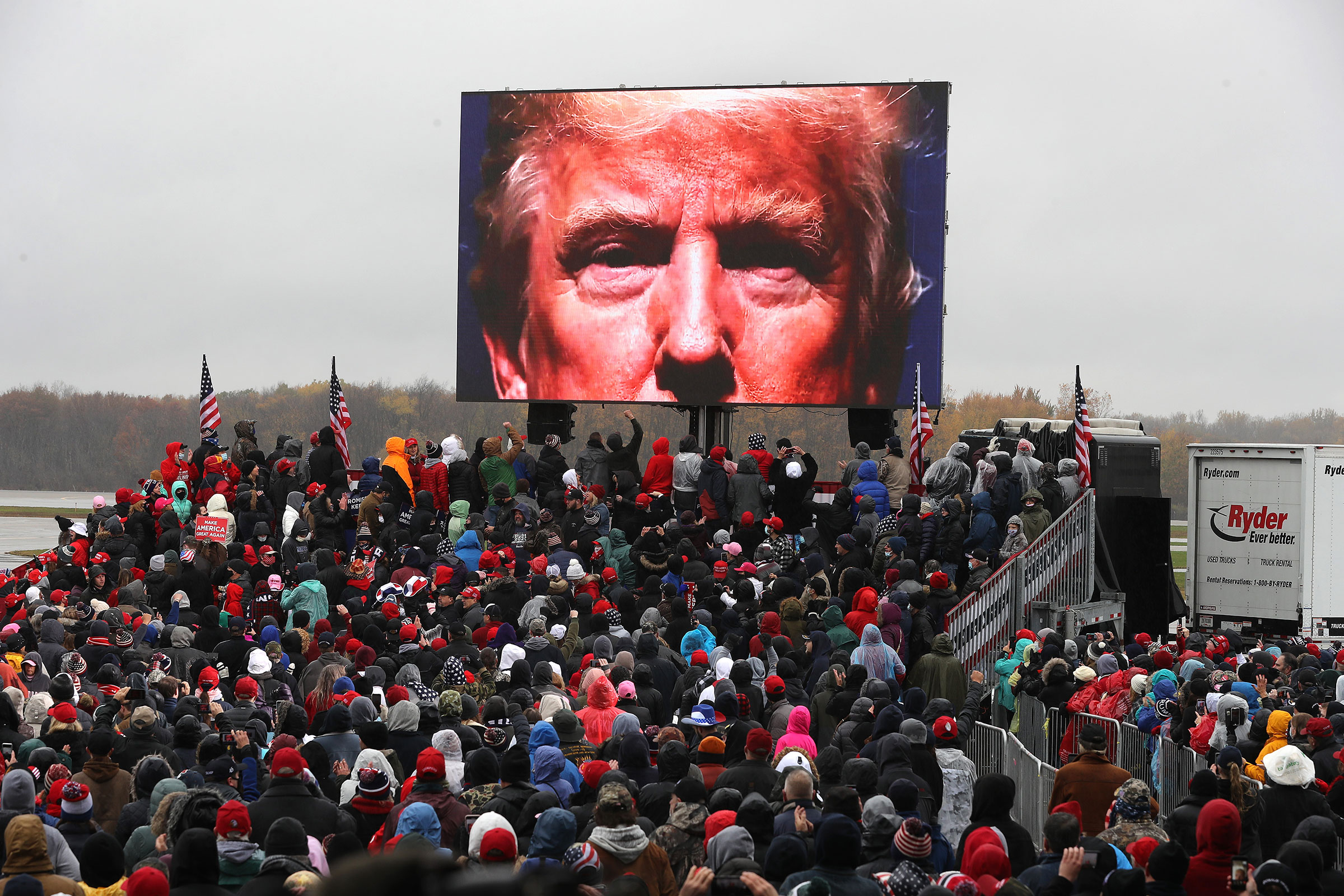
In the final run up to Election Day, the United States has hit its worst spike in cases of COVID-19 since the pandemic began. As of Oct. 30, there have been 830,000 new infections reported and more than 9,500 deaths in the two weeks leading up the election.
In his closing message to Americans as a presidential candidate, President Donald Trump has mocked the deadly virus as a media conspiracy and insisted it is on its way out, despite having contracted it himself. “Until November 4th., Fake News Media is going full on Covid, Covid, Covid,” he tweeted on Oct. 27. “We are rounding the turn. 99.9%.”
With cases, hospitalizations and deaths on the rise, there’s almost no indication that’s the case. Trump continues to insist that a vaccine is “weeks” away and to talk about an economic rebound in 2021. But with a few days until Election Day and with millions of Americans already having cast their ballots, Trump is scoring low marks from voters on his handling of the pandemic that has claimed more than 230,000 lives in the United States. As of Oct. 29, an average of 57.6% of Americans disapproved of Trump’s coronavirus response while an average of 39.4% approved, according to a FiveThirtyEight poll tracker.
If Trump wins re-election despite those numbers, “It would… ultimately mean that people have decided to look ahead rather than look back,” says Mike DuHaime, a Republican political operative.
Trump is hoping that’s exactly what voters want to do. He has continued to hold rallies with thousands of supporters, despite restrictions on crowd size meant to slow the spread of the virus. And he continues to encourage his audiences to look beyond the current reality. “Biden would lock us down forever. We are rounding the corner!” Trump tweeted on Oct. 30.
Trump has marked his final blitz of rallies with a cascade of misinformation on the pandemic. Speaking in Waterford Township, Michigan on Oct. 30, Trump joked that mask use was “politically correct,” falsely accused doctors of over reporting COVID-19 deaths to “make money,” inaccurately blamed the rise in cases on more testing, and said, “If you get it, you’re gonna get better,” which hasn’t been the case for hundreds of thousands of Americans and more than one million people worldwide.
“That’s all I hear about now. Turn on television, ‘Covid, Covid, Covid, Covid, Covid, Covid,'” Trump said at a rally in Lumberton, North Carolina on Oct. 24. “By the way, on November 4, you won’t hear about it anymore.”
Trump’s instinct to downplay the pandemic has been consistent since the early days of the virus’s spread in the United States. “What Trump did was decide to pretend like coronavirus wasn’t the most dominant thing in people’s lives,” says Sarah Longwell, founder of Republican Voters Against Trump (RVAT).
Throughout the year, the President has flouted recommendations by the government’s top public health experts. In April, he suggested in a White House briefing that scientists should explore whether injecting disinfectants like bleach into the human body could cure COVID-19. (He later claimed the comment was sarcastic.) He refused to wear a mask in public for months, long after the consensus in the scientific community suggested mask-wearing was the single most effective way to slow the spread of the virus.
Trump thought wearing masks made him and others around him look weak and afraid, says a White House aide. He routinely scowled when he saw aides wearing masks, and for months during the pandemic would say he couldn’t hear or understand officials speaking to him with masks on, according to two current and one former aide.
By mid-summer, when Americans had lived circumscribed, fearful lives for months, even some voters who had supported Trump in 2016 were souring on his leadership during this national emergency. “It’s a ‘don’t care’ attitude,” a teacher’s assistant in Ft. Lauderdale, FL said on a focus group hosted by RVAT in July, which TIME observed. “This is a time in crisis. You’re supposed to be with us. And I can’t see it.”
In September, the White House’s careless approach to safety during the pandemic caught up with it. In a matter of weeks, more than 30 people in Trump’s orbit came down with COVID-19, including senior counselor Hope Hicks, White House press secretary Kayleigh McEnany, First Lady Melania Trump and the President.
Trump was a challenging patient, resisting going to the hospital at first and then stage managing how his health was projected to the public. As he received expensive and experimental treatments, he told his doctors not to mention the injury they saw to his lung scans and to delay releasing that his blood oxygen levels had dipped. After four days in the hospital, he returned to the White House, saying in a video , “I’m better — and maybe I’m immune — I don’t know. But don’t let it dominate your lives. Get out there. Be careful. We have the best medicines in the world.”
Whether Trump wants to acknowledge it or not, the pandemic has dominated American life for the better part of 2020. And his response will likely be top of mind for many voters when they head to the polls.
Make sense of what matters in Washington. Sign up for the daily D.C. Brief newsletter.
More Must-Reads from TIME
- Cybersecurity Experts Are Sounding the Alarm on DOGE
- Meet the 2025 Women of the Year
- The Harsh Truth About Disability Inclusion
- Why Do More Young Adults Have Cancer?
- Colman Domingo Leads With Radical Love
- How to Get Better at Doing Things Alone
- Michelle Zauner Stares Down the Darkness
Write to Tessa Berenson Rogers at tessa.Rogers@time.com
